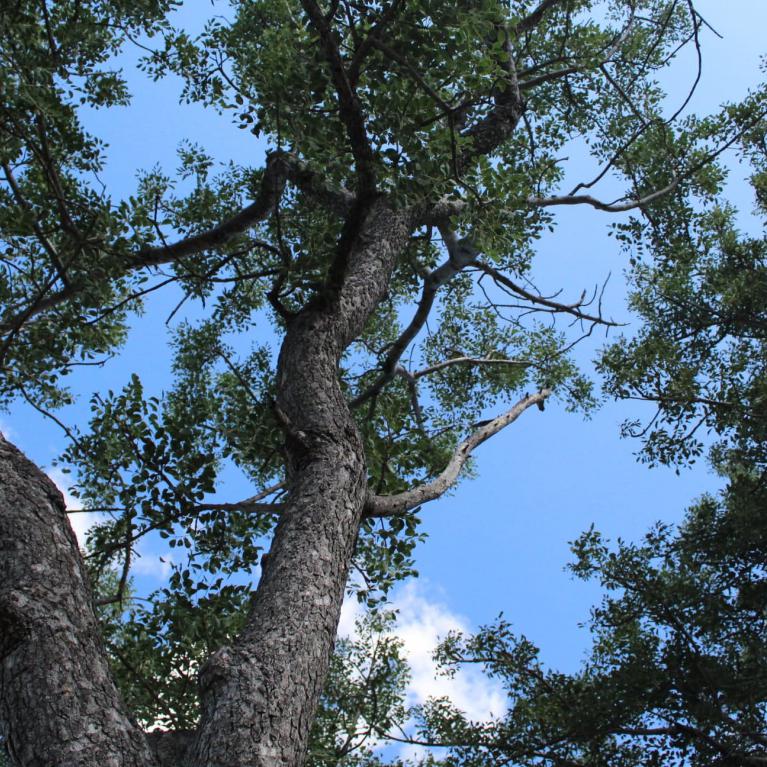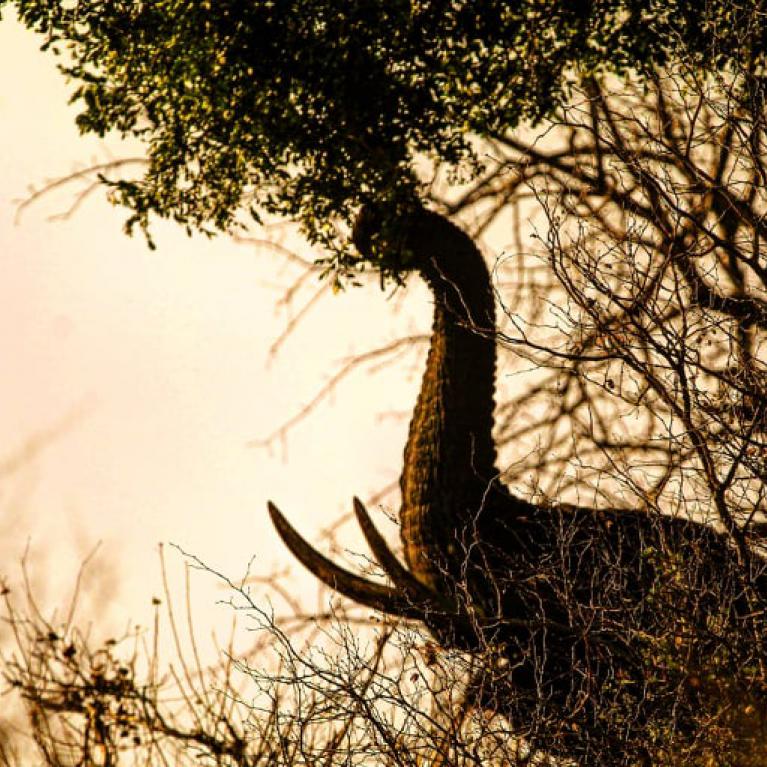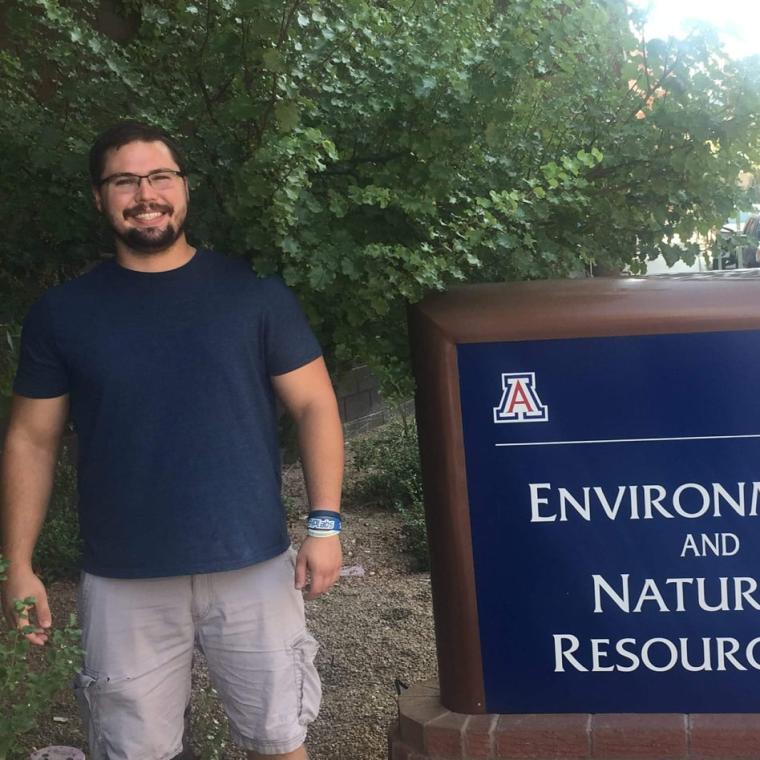Christopher Banotai
PhD Candidate
Investigation of Factors Influencing the Decline in an Emblematic Bushveld Savanna Tree Species, the Marula (Sclerocarya birrea sbsp. caffra).
Currently, there is a decline in an ecologically, economically, and culturally important tree species in the bushveld savannas of the South African lowveld—the marula (Sclerocarya birrea sbsp. caffra). These trees produce a prolific amount of fruit which is eaten by everything from insects, birds, and rodents, all the way up to elephants and humans. As large trees, marulas provide shelter and habitat for a multitude of species, influence animal movement, and participate in nutrient cycling. Additionally, their fruits are used to produce products such as alcoholic beverages and cosmetics. Further, these trees are emblematic of the bushveld savanna ecosystem itself and tie into the cultures of the region.
Banotai_marula.jpg

The decline in marula populations is often attributed to fires and elephant impact, however, these declines are occurring in game reserves of the Kruger Associated Private Nature Reserves (APNR), where fire is controlled. Elephants do have a significant impact on woody vegetation, however the statistics of the decline reveal that it is due to a lack of recruitment (trees not surviving from seedlings to adult trees) rather than adult mortality of trees. This is evidenced on the landscape by a scarcity of seedlings, saplings, and trees of intermediate size classes, which would not be impacted by elephants. In fact, elephants are a primary seed distributer for marulas.
In order to better understand the factors influencing these population declines and failures to recruit more marula trees, we are employing several strategies at Balule Nature Reserve (BNR), a perfect representation of the South African lowveld/bushveld savanna, which shares an open border with Kruger National Park. First, we chose research sites proportionally distributed throughout the different vegetation communities of BNR. At each site, we evaluated adult marula trees for characteristics including size class, trunk diameter, presence of insect pests, and elephant damage. We also searched these sites for marula seedlings. Each month, we return to reevaluate the trees and seedlings for new damage and survival. This will clarify the true impacts of elephants on marula trees and inform us as to what influences the likelihood of elephants to interact with marula trees. Also, this will help us gain a better understanding of the recruitment process in marula trees.
Banotai_leopardcam.jpg

To better understand which herbivore species may feed on marula seedlings, we have employed four game cameras at each site, to record the occupancy herbivore species across the different vegetation communities. This can be compared to marula seedling abundance and survival, telling us which species are likely to be feeding on the seedlings. We will also be using game cameras to record direct evidence of species feeding on marula seedlings, hopefully corroborating our other evidence. Finally, we will be performing exclosure experiments by planting seedlings, excluding different size classes of herbivores from the area, and tracking seedling survival over time. These investigations are crucial for helping managers make informed decisions that will lead to positive outcomes for elephants, marula, trees, people, and the overall habitats that they are responsible for.
Our work reaches beyond the fences of the reserve, as conservation always involves working with people more than wildlife. Ecotourism is a huge employer in the region, however, there are still underprivileged and underserved communities just outside Kruger National Park and the APNR. Many people living just outside their fences may have never been inside them, likely due to lack of opportunity. The conservation-focused NGO we work with, Transfrontier Africa of Black Mambas Anti-Poaching Unit renown, has created an environmental education outreach program in these communities. Through collaborating with this group, we hope to develop surveys and tools to help gauge knowledge, perspectives, and interest concerning conservation, wildlife, and protected areas among children in the program and their families. This information is crucial in better serving these communities and fostering a positive relationship with wildlife conservation.
Major Questions:
Banotai_elephant.jpg

1) What is the true impact of elephants on marula trees, what influences the likelihood of elephants interacting with marula trees, and how resilient are these trees.
2) What factors influence marula seedling abundance and survival/which herbivore species feed on marula seedlings and saplings?
3) What are public perceptions of wildlife conservation and protected areas in surrounding communities?
Personal Background:
Chris has a background in ecology, having varied research experience with a diverse group of taxa. Originally from Saint Louis, Missouri Chris began his research career as an assistant at his undergrad university, investigating the ecology and genetics of freshwater darters (percidae) in the Meramec River drainages. From there, he worked to a project lead position in a lab at the university, investigating urban pollinator species richness, abundance, and distribution among community gardens across the city of Saint Louis, Missouri. For his master’s degree, Chris performed an investigation of South African bushveld savanna rodents’ ability to influence the recruitment of trees through feeding on their seeds and seedlings—the preliminary work for his current projects. As hobbies, Chris enjoys fishing, hiking, hunting, animal welfare outreaches, and photography.


